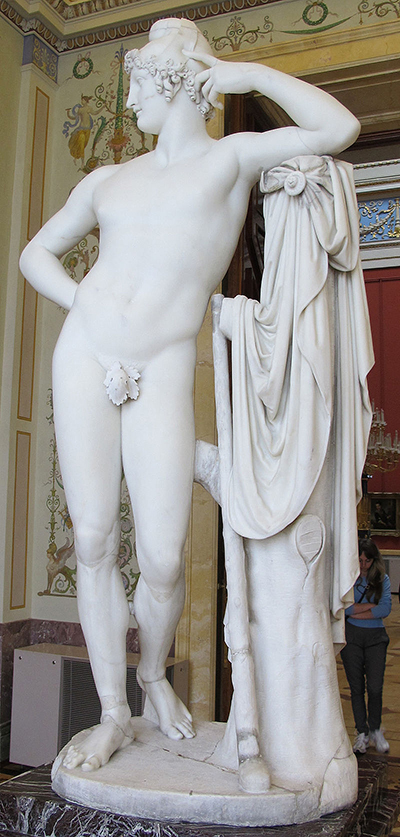Paride, which translates from Italian as Paris, was the title of a sculpture design by Antonio Canova in the early 19th century which would appear in several different versions. You will find Paride within both the Hermitage Museum in St Petersburg and also the Metropolitan Museum in New York.
It was entirely common for the artist, like many sculptors, to release different versions of the same design. Plaster moulds would often be left over, and in other cases the sculptor might decide to cast several different versions, though on occasion they might differ slightly. The great masters of sculpture, such as Canova, would receive huge interest in any items from their careers, and so even the original moulds can command large valuations in today's market. Thankfully, many of these were preserved for future generations and they also help art historians to better understand the particular working methods of each artist. In some cases, artists might destroy them in order to provide a layer of secrecy to their careers. The likes of Canova, Rodin or Michelangelo would also run large studios and within these many such items would be strewn, leaving clues for later generations to discover. In this example, Paride holds a strong glare in keeping with the traditional tale of which many are still familiar today. The artist would also release a bust version for a friend and the overall theme would inspire around a dozen different items, perhaps even more than that.
The St Petersburg version stands at an impressive two metres tall and is made entirely from marble. The pose features a left arm leaning onto a tree, which reminds us that this attractive man was actually a Phrygian shepherd. He is sometimes known instead within Greek mythology as Alexander. He is entirely distracted within this pose, and has hung his cloak on the tree to his left and he looks across in the opposite direction. Greek mythology would feature in quite a number of Canova sculptures and this became a common part of his oeuvre which then encouraged new patrons to request something similar for their own upcoming projects. He steadily built up a strong following, not just in number, but also in their own prominence which ensured that politically he was protected and also that financial concerns were soon far from his mind. In return, he would have to work efficiently and so he brought a number of workers into his studio who would help out with some of the more menial tasks, freeing him up to concentrate on the more important elements of his high profile projects.
Visitors to either of the Hermitage Museum in St Petersburg and also the Metropolitan Museum in New York will be able to view one of the two main full length marble versions of Paride, or Paris. Besides both of these artworks, the institutions also hold a number of other highly significant historic sculptures which would probably also be of interest to you. For example, the Hermitage features the likes of Repentant Mary Magdalene, The Genius of Death (both also Canova) and Abel by Giovanni Duprè, whilst in the Metropolitan Museum you will also be wise to check out the likes of Perseus with the Head of Medusa (Canova), Bacchanal: A Faun Teased by Children by Gian Lorenzo Bernini and Marsyas by German sculptor Balthasar Permoser. Both have great coverage of European sculpture from the Renaissance up to the mid 19th century which take a prominent role within their overall collections.




